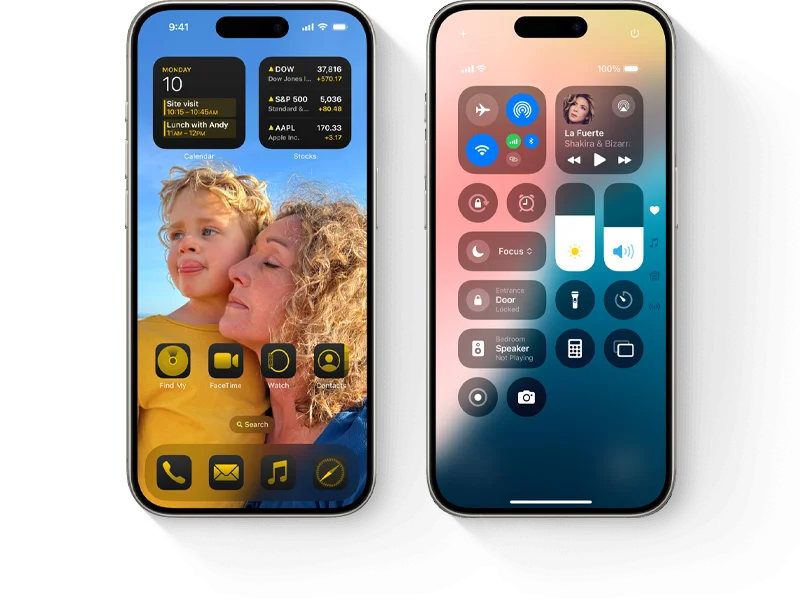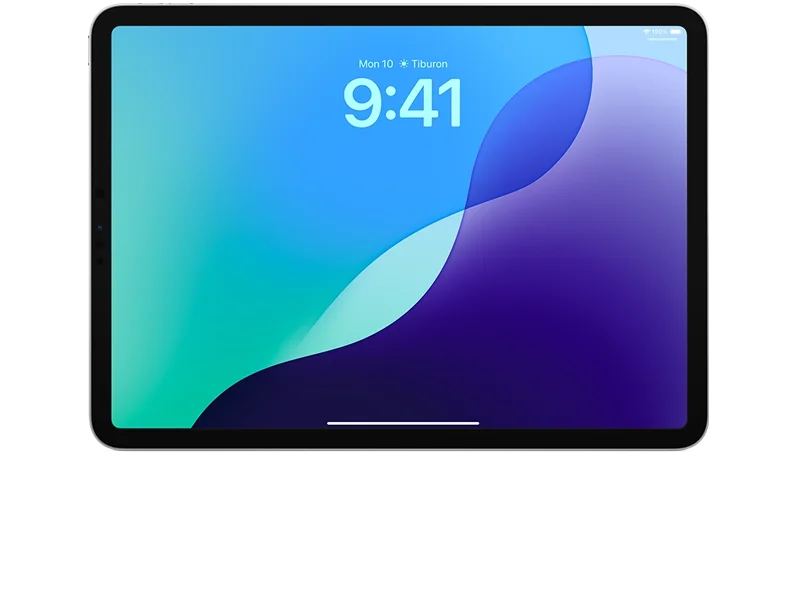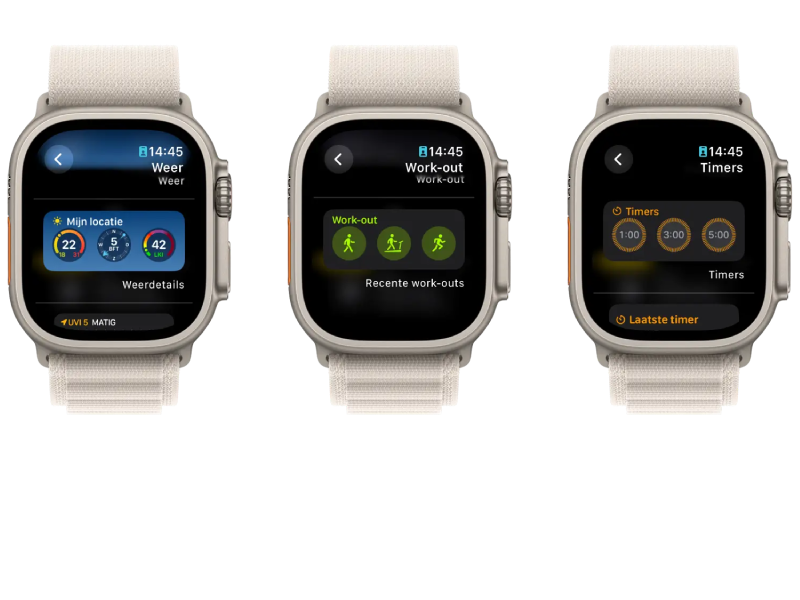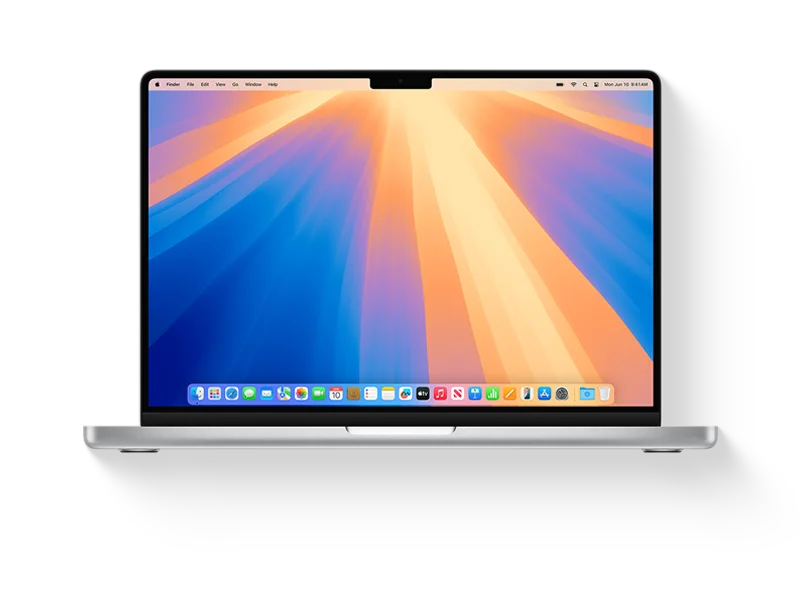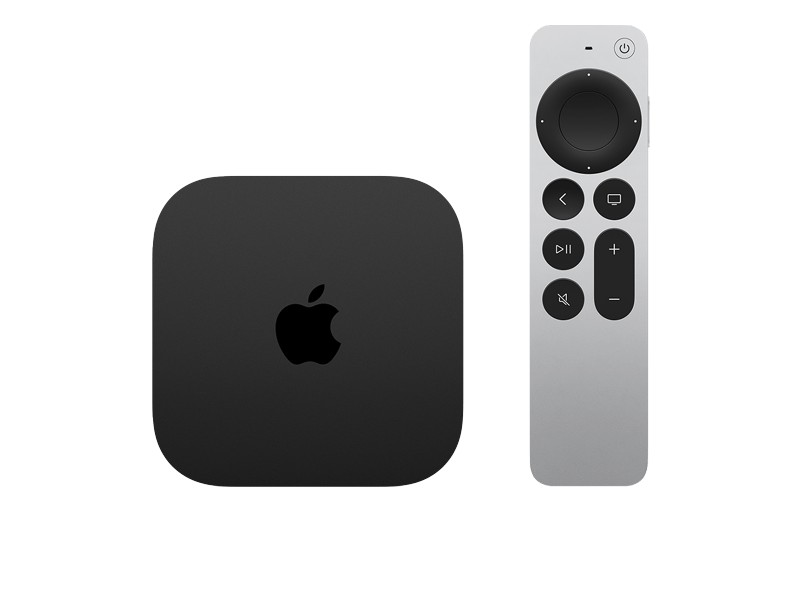iOS 19 Beta Profile Download
Join the iOS 19 Beta Program: Download and Install Guide
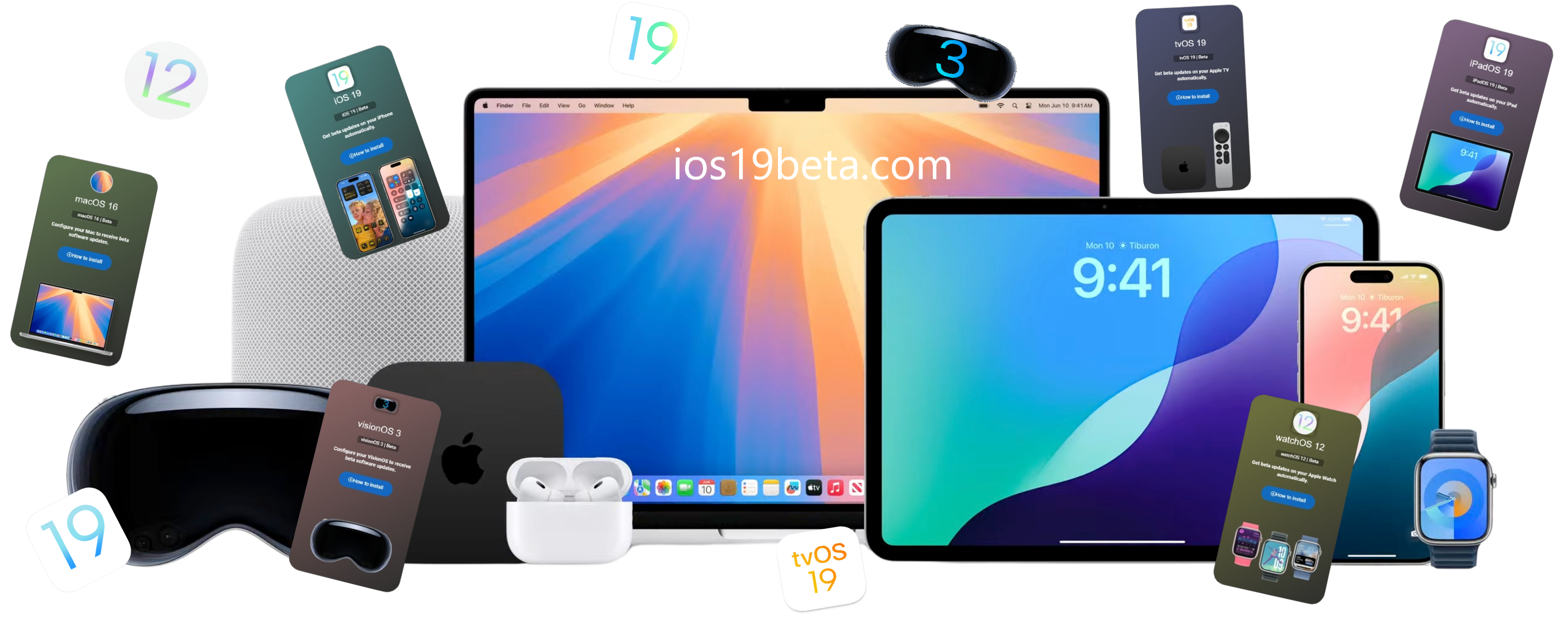
iOS 19 Beta Release Date: 9th June 2025
iOS 19

visionOS 3 Beta 1
Configure your VisionOS to receive beta software updates.
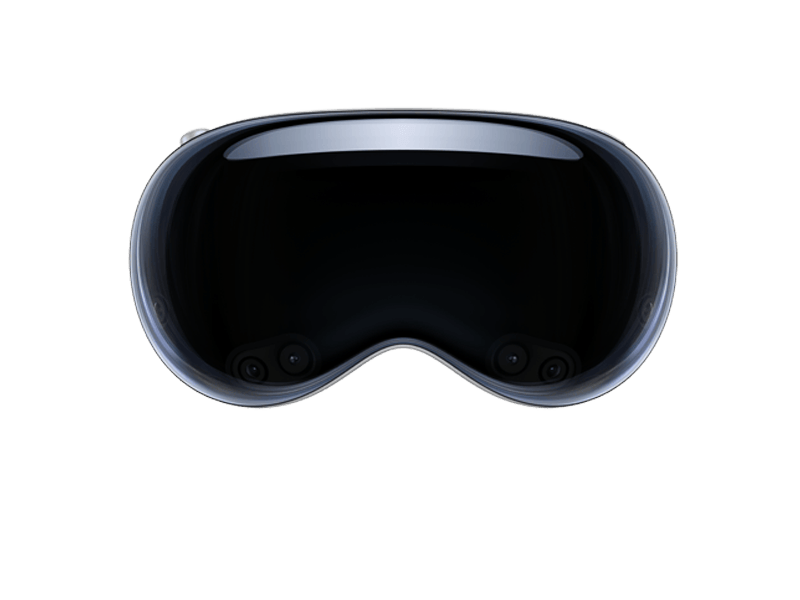
Check Your Device Compatibility
Find out if your device supports iOS 19 and its new features
iOS 19 Compatibility Checker
Check if your device is compatible with iOS 19 and understand performance expectations.
Why Check Compatibility?
Ensure your device can run iOS 19 smoothly and take advantage of all the new features.
Performance Analysis
Get detailed insights about how your device will handle the new features and improvements.
Safety First
Learn about potential limitations and get recommendations for a smooth upgrade experience.
Apple Beta Software Installation Guide
Learn how to download and install beta versions of iOS 19, iPadOS 19, watchOS 12, tvOS 19, macOS 16, and visionOS 3. Get step-by-step instructions, troubleshooting tips, and expert advice.
iOS 19 Beta Installation Guide
Experience the next generation of iPhone features before the official release
Requirements
Beta software is not final and may contain bugs that could potentially affect the normal functioning of your device. It's recommended to install beta software only on secondary devices, not your primary iPhone. Always back up your device before installing any beta software.
Developer Beta Installation
-
Back up your iPhone
Before installing any beta software, create a complete backup of your iPhone using either iCloud or your computer. This ensures you can restore your data if anything goes wrong.
-
Register as an Apple Developer
If you're not already registered, sign up for the Apple Developer Program at developer.apple.com. This requires an annual fee of $99 and provides immediate access to developer betas.
-
Download the iOS 19 Beta Profile
Sign in to the Apple Developer website with your Apple ID. Navigate to the Downloads section and find the iOS 19 beta profile. Download it to your iPhone.
-
Install the Beta Profile
Once downloaded, go to Settings on your iPhone. You should see "Profile Downloaded" at the top. Tap on it and follow the on-screen instructions to install the profile. Your device will need to restart after this step.
-
Download and Install iOS 19 Beta
After your iPhone restarts, go to Settings > General > Software Update. The iOS 19 beta should appear. Tap "Download and Install" to begin the process. Make sure your device is connected to Wi-Fi and a power source.
-
Complete the Installation
Enter your passcode when prompted and agree to the terms and conditions. The download and installation process may take some time. Your iPhone will restart automatically when the installation is complete.
Public Beta Installation
-
Back up your iPhone
Create a complete backup of your iPhone using either iCloud or your computer before proceeding with the beta installation.
-
Join the Apple Beta Software Program
Visit beta.apple.com and sign in with your Apple ID. Tap "Sign up" if you haven't joined before. The program is free and available to everyone.
-
Enroll Your Device
On the Beta Software Program website, select "Enroll Your Devices" from the top menu. Scroll down to the iOS section and follow the instructions to download the beta profile to your iPhone.
-
Install the Beta Profile
Once downloaded, go to Settings on your iPhone. You should see "Profile Downloaded" at the top. Tap on it and follow the on-screen instructions to install the profile. Your device will need to restart.
-
Download and Install iOS 19 Public Beta
After your iPhone restarts, go to Settings > General > Software Update. The iOS 19 public beta should appear. Tap "Download and Install" to begin the process. Ensure your device is connected to Wi-Fi and a power source.
-
Complete the Installation
Enter your passcode when prompted and agree to the terms and conditions. The download and installation process may take some time. Your iPhone will restart automatically when the installation is complete.
The iOS 19 public beta is typically released 2-3 weeks after the developer beta, usually in July. The developer beta is available immediately after WWDC25 in June 2025.
Common Issues & Troubleshooting
Beta Profile Not Installing
If the beta profile won't install, try restarting your iPhone first. Make sure you have an active internet connection and that your device is not managed by an organization. If issues persist, delete any existing profiles in Settings > General > VPN & Device Management and try again.
Update Not Appearing
If the iOS 19 beta doesn't appear in Software Update after installing the profile, wait a few minutes and check again. Try restarting your device. Ensure your device is compatible with iOS 19 and that you've installed the correct profile for your device.
Installation Fails
If the installation fails, ensure you have sufficient storage space (at least 5GB free), a stable Wi-Fi connection, and that your battery is charged above 50% or connected to power. If issues persist, try downloading the update again or restore your device and try again.
Battery Drain
Beta software often causes increased battery drain. This is normal as the system is still being optimized. You can mitigate this by reducing screen brightness, disabling background app refresh for non-essential apps, and using Low Power Mode when necessary.
App Compatibility Issues
Some apps may not work properly with iOS 19 beta. Check for app updates regularly, as developers will release compatibility updates. If a critical app doesn't work, you may need to downgrade to a stable iOS version or wait for the app to be updated.
How to Downgrade
If you need to revert to a stable iOS version, you'll need to put your device in recovery mode and restore it using a computer with iTunes or Finder. Note that you can only downgrade to currently signed iOS versions, and you'll lose any data not included in your backup.
iPadOS 19 Beta Installation Guide
Transform your iPad experience with the latest features and improvements
Requirements
Beta software is not final and may contain bugs that could potentially affect the normal functioning of your device. It's recommended to install beta software only on secondary devices, not your primary iPad. Always back up your device before installing any beta software.
Developer Beta Installation
-
Back up your iPad
Before installing any beta software, create a complete backup of your iPad using either iCloud or your computer. This ensures you can restore your data if anything goes wrong.
-
Register as an Apple Developer
If you're not already registered, sign up for the Apple Developer Program at developer.apple.com. This requires an annual fee of $99 and provides immediate access to developer betas.
-
Download the iPadOS 19 Beta Profile
Sign in to the Apple Developer website with your Apple ID. Navigate to the Downloads section and find the iPadOS 19 beta profile. Download it to your iPad.
-
Install the Beta Profile
Once downloaded, go to Settings on your iPad. You should see "Profile Downloaded" at the top. Tap on it and follow the on-screen instructions to install the profile. Your device will need to restart after this step.
-
Download and Install iPadOS 19 Beta
After your iPad restarts, go to Settings > General > Software Update. The iPadOS 19 beta should appear. Tap "Download and Install" to begin the process. Make sure your device is connected to Wi-Fi and a power source.
-
Complete the Installation
Enter your passcode when prompted and agree to the terms and conditions. The download and installation process may take some time. Your iPad will restart automatically when the installation is complete.
Public Beta Installation
-
Back up your iPad
Create a complete backup of your iPad using either iCloud or your computer before proceeding with the beta installation.
-
Join the Apple Beta Software Program
Visit beta.apple.com and sign in with your Apple ID. Tap "Sign up" if you haven't joined before. The program is free and available to everyone.
-
Enroll Your Device
On the Beta Software Program website, select "Enroll Your Devices" from the top menu. Scroll down to the iPadOS section and follow the instructions to download the beta profile to your iPad.
-
Install the Beta Profile
Once downloaded, go to Settings on your iPad. You should see "Profile Downloaded" at the top. Tap on it and follow the on-screen instructions to install the profile. Your device will need to restart.
-
Download and Install iPadOS 19 Public Beta
After your iPad restarts, go to Settings > General > Software Update. The iPadOS 19 public beta should appear. Tap "Download and Install" to begin the process. Ensure your device is connected to Wi-Fi and a power source.
-
Complete the Installation
Enter your passcode when prompted and agree to the terms and conditions. The download and installation process may take some time. Your iPad will restart automatically when the installation is complete.
Common Issues & Troubleshooting
Beta Profile Not Installing
If the beta profile won't install, try restarting your iPad first. Make sure you have an active internet connection and that your device is not managed by an organization. If issues persist, delete any existing profiles in Settings > General > VPN & Device Management and try again.
Update Not Appearing
If the iPadOS 19 beta doesn't appear in Software Update after installing the profile, wait a few minutes and check again. Try restarting your device. Ensure your device is compatible with iPadOS 19 and that you've installed the correct profile for your device.
Installation Fails
If the installation fails, ensure you have sufficient storage space (at least 5GB free), a stable Wi-Fi connection, and that your battery is charged above 50% or connected to power. If issues persist, try downloading the update again or restore your device and try again.
App Compatibility Issues
Some apps may not work properly with iPadOS 19 beta. Check for app updates regularly, as developers will release compatibility updates. If a critical app doesn't work, you may need to downgrade to a stable iPadOS version or wait for the app to be updated.
watchOS 12 Beta Installation Guide
Experience the next generation of Apple Watch features with enhanced health monitoring and personalization
Requirements
Beta software is not final and may contain bugs that could potentially affect the normal functioning of your Apple Watch. Unlike iOS devices, downgrading watchOS is not possible without sending your watch to Apple. It's strongly recommended to install watchOS beta software only on secondary devices, not your primary Apple Watch.
Developer Beta Installation
-
Back up your Apple Watch
Before installing any beta software, ensure your Apple Watch is backed up. This happens automatically when you back up your iPhone if you have the "Encrypt iPhone backup" option enabled in Finder or iTunes.
-
Install iOS 19 Beta on your iPhone
You must have the iOS 19 beta installed on your paired iPhone before you can install the watchOS 12 beta on your Apple Watch. Follow the iOS 19 beta installation steps first.
-
Register as an Apple Developer
If you're not already registered, sign up for the Apple Developer Program at developer.apple.com. This requires an annual fee of $99 and provides immediate access to developer betas.
-
Download the watchOS 12 Beta Profile
Sign in to the Apple Developer website with your Apple ID. Navigate to the Downloads section and find the watchOS 12 beta profile. Download it to your iPhone.
-
Install the Beta Profile
Once downloaded, go to the Watch app on your iPhone. Navigate to General > Software Update > Beta Updates and select the watchOS 12 Developer Beta. You may need to restart your Apple Watch after this step.
-
Download and Install watchOS 12 Beta
In the Watch app on your iPhone, go to General > Software Update. The watchOS 12 beta should appear. Tap "Download and Install" to begin the process. Make sure your Apple Watch is connected to its charger, has at least 50% battery, and is within range of your iPhone connected to Wi-Fi.
-
Complete the Installation
The download and installation process may take some time. Your Apple Watch will restart automatically when the installation is complete. Keep your Apple Watch on the charger until the update is finished.
Public Beta Installation
-
Back up your Apple Watch
Ensure your Apple Watch is backed up by backing up your paired iPhone with the "Encrypt iPhone backup" option enabled.
-
Install iOS 19 Public Beta on your iPhone
You must have the iOS 19 public beta installed on your paired iPhone before you can install the watchOS 12 public beta on your Apple Watch.
-
Join the Apple Beta Software Program
Visit beta.apple.com and sign in with your Apple ID. Tap "Sign up" if you haven't joined before. The program is free and available to everyone.
-
Enroll Your Devices
On the Beta Software Program website, select "Enroll Your Devices" from the top menu. Scroll down to the watchOS section and follow the instructions to download the beta profile to your iPhone.
-
Install the Beta Profile
Once downloaded, go to the Watch app on your iPhone. Navigate to General > Software Update > Beta Updates and select the watchOS 12 Public Beta. You may need to restart your Apple Watch.
-
Download and Install watchOS 12 Public Beta
In the Watch app on your iPhone, go to General > Software Update. The watchOS 12 public beta should appear. Tap "Download and Install" to begin the process. Ensure your Apple Watch is connected to its charger, has at least 50% battery, and is within range of your iPhone connected to Wi-Fi.
-
Complete the Installation
Your Apple Watch will download the update, install it, and restart automatically. Follow any on-screen prompts to complete the setup.
The watchOS 12 public beta is typically released 2-3 weeks after the developer beta, usually in July 2025. The developer beta is available immediately after WWDC25 in June 2025.
Common Issues & Troubleshooting
Update Not Appearing
If the watchOS 12 beta doesn't appear in Software Update, make sure you've installed the iOS 19 beta on your paired iPhone first. Also verify that you've installed the correct watchOS beta profile and that your Apple Watch model is compatible with watchOS 12.
Installation Fails
If the installation fails, ensure your Apple Watch is connected to its charger, has at least 50% battery, and is within range of your iPhone connected to Wi-Fi. Try restarting both your iPhone and Apple Watch, then attempt the installation again.
Battery Drain
Beta software often causes increased battery drain. This is normal as the system is still being optimized. You can mitigate this by reducing screen brightness, closing unused apps, and using Power Reserve mode when necessary.
Cannot Downgrade
Unlike iOS, there is no user-accessible way to downgrade watchOS. If you experience serious issues with the watchOS 12 beta, you'll need to wait for the next beta update or the final release. In extreme cases, you may need to contact Apple Support to have your watch restored to a previous version.
tvOS 19 Beta Installation Guide
Enhance your entertainment experience with the latest features for Apple TV
Requirements
Beta software is not final and may contain bugs that could potentially affect the normal functioning of your Apple TV. While tvOS betas are generally more stable than other OS betas, there's still a risk of issues with streaming services, apps, and general functionality.
Developer Beta Installation
-
Register as an Apple Developer
If you're not already registered, sign up for the Apple Developer Program at developer.apple.com. This requires an annual fee of $99 and provides immediate access to developer betas.
-
Download the tvOS 19 Beta Profile
Sign in to the Apple Developer website with your Apple ID. Navigate to the Downloads section and find the tvOS 19 beta profile. Download it to your iPhone or iPad.
-
Install the Beta Profile on Apple TV
On your iPhone or iPad, open the profile file. You'll be prompted to select a device. Choose your Apple TV. Follow the on-screen instructions to complete the installation.
-
Update Your Apple TV
On your Apple TV, go to Settings > System > Software Updates > Update Software. The tvOS 19 beta should appear. Select "Download and Install" to begin the process. Your Apple TV will download the update, install it, and restart automatically.
Public Beta Installation
-
Join the Apple Beta Software Program
Visit beta.apple.com and sign in with your Apple ID. Click "Sign up" if you haven't joined before. The program is free and available to everyone.
-
Enroll Your Apple TV
On the Beta Software Program website, select "Enroll Your Devices" from the top menu. Scroll down to the tvOS section and follow the instructions to download the beta profile to your iPhone or iPad.
-
Install the Beta Profile on Apple TV
On your iPhone or iPad, open the profile file. You'll be prompted to select a device. Choose your Apple TV. Follow the on-screen instructions to complete the installation.
-
Update Your Apple TV
On your Apple TV, go to Settings > System > Software Updates > Update Software. The tvOS 19 public beta should appear. Select "Download and Install" to begin the process. Your Apple TV will download the update, install it, and restart automatically.
Common Issues & Troubleshooting
Update Not Appearing
If the tvOS 19 beta doesn't appear in Software Update, make sure you've correctly installed the beta profile. Try restarting your Apple TV and checking again. Ensure your Apple TV model is compatible with tvOS 19.
Installation Fails
If the installation fails, ensure your Apple TV has a stable internet connection. Try restarting your Apple TV and router, then attempt the installation again. If issues persist, you may need to restore your Apple TV using a computer.
App Compatibility Issues
Some apps may not work properly with tvOS 19 beta. Check for app updates regularly, as developers will release compatibility updates. For critical apps, check with the developer about tvOS 19 compatibility before installing the beta. If a critical app doesn't work, you may need to downgrade to a stable tvOS version.
Streaming Service Problems
If you experience issues with streaming services like Netflix, Disney+, or Apple TV+, try signing out and signing back in to the affected service. If problems persist, you may need to wait for an app update or the next beta version.
macOS 16 Beta Installation Guide
Experience the next evolution of Mac with powerful new features and enhanced performance
Requirements
Beta software is not final and may contain bugs that could potentially affect the normal functioning of your Mac. macOS betas can be particularly risky as they may impact critical system functions and applications. It's strongly recommended to install macOS beta software only on secondary devices, not your primary Mac. Always back up your Mac before installing any beta software.
Developer Beta Installation
-
Back up your Mac
Before installing any beta software, create a complete backup of your Mac using Time Machine or another backup solution. This ensures you can restore your data if anything goes wrong.
-
Register as an Apple Developer
If you're not already registered, sign up for the Apple Developer Program at developer.apple.com. This requires an annual fee of $99 and provides immediate access to developer betas.
-
Download the macOS 16 Beta Access Utility
Sign in to the Apple Developer website with your Apple ID. Navigate to the Downloads section and find the macOS 16 beta access utility. Download it to your Mac.
-
Install the Beta Access Utility
Open the downloaded .dmg file and run the installer. Follow the on-screen instructions to complete the installation. This will enroll your Mac in the macOS developer beta program.
-
Download and Install macOS 16 Beta
After installing the beta access utility, go to System Settings > General > Software Update. The macOS 16 beta should appear. Click "Upgrade Now" to begin the download and installation process. This may take some time depending on your internet connection and Mac's performance.
-
Complete the Installation
Your Mac will restart several times during the installation process. Follow any on-screen prompts to complete the setup. Once finished, your Mac will boot into macOS 16 beta.
Public Beta Installation
-
Back up your Mac
Create a complete backup of your Mac using Time Machine or another backup solution before proceeding with the beta installation.
-
Join the Apple Beta Software Program
Visit beta.apple.com and sign in with your Apple ID. Click "Sign up" if you haven't joined before. The program is free and available to everyone.
-
Enroll Your Mac
On the Beta Software Program website, select "Enroll Your Devices" from the top menu. Scroll down to the macOS section and click "Download the macOS Public Beta Access Utility". Run the downloaded installer to enroll your Mac in the public beta program.
-
Download and Install macOS 16 Public Beta
After installing the public beta access utility, go to System Settings > General > Software Update. The macOS 16 public beta should appear. Click "Upgrade Now" to begin the download and installation process.
-
Complete the Installation
Your Mac will restart several times during the installation process. Follow any on-screen prompts to complete the setup. Once finished, your Mac will boot into macOS 16 public beta.
The macOS 16 public beta is typically released 2-3 weeks after the developer beta, usually in July 2025. The developer beta is available immediately after WWDC25 in June 2025.
Common Issues & Troubleshooting
Installation Fails
If the installation fails, ensure your Apple TV has a stable internet connection. Try restarting your Apple TV and router, then attempt the installation again. If issues persist, you may need to restore your Apple TV using a computer.
App Compatibility Issues
Some apps may not work properly with tvOS 19 beta. Check for app updates regularly, as developers will release compatibility updates. For critical apps, check with the developer about tvOS 19 compatibility before installing the beta. If a critical app doesn't work, you may need to downgrade to a stable tvOS version.
Streaming Service Problems
If you experience issues with streaming services like Netflix, Disney+, or Apple TV+, try signing out and signing back in to the affected service. If problems persist, you may need to wait for an app update or the next beta version.
visionOS 3 Beta Installation Guide
Step into the future of spatial computing with the latest visionOS features
Requirements
Beta software is not final and may contain bugs that could potentially affect the normal functioning of your Vision Pro. visionOS betas can be particularly risky as they may impact spatial tracking, eye tracking, and other critical functions that could lead to discomfort or motion sickness. It's strongly recommended to install visionOS beta software only for development purposes and not for regular use.
Developer Beta Installation
-
Back up your Vision Pro
Before installing any beta software, create a complete backup of your Vision Pro. Connect your Vision Pro to your Mac and use Finder to create a backup.
-
Register as an Apple Developer
If you're not already registered, sign up for the Apple Developer Program at developer.apple.com. This requires an annual fee of $99 and provides immediate access to developer betas.
-
Install macOS 16 Beta on your Mac
You'll need a Mac running the macOS 16 beta to install the visionOS 3 beta on your Vision Pro. Follow the macOS 16 beta installation steps first.
-
Download Xcode 17 Beta
From the Apple Developer website, download and install the Xcode 17 beta, which includes the necessary tools for visionOS 3 development and installation.
-
Download the visionOS 3 Beta
In the Downloads section of the Apple Developer website, find and download the visionOS 3 beta software restore image for Vision Pro.
-
Connect Your Vision Pro
Connect your Vision Pro to your Mac using a USB-C cable. Make sure your Vision Pro is powered on and unlocked.
-
Install the Beta
Open Xcode 17 beta, go to Window > Devices and Simulators. Select your Vision Pro from the list of devices. Click on the "Options" button and select "Restore with Custom Image". Choose the visionOS 3 beta software restore image you downloaded earlier and follow the on-screen instructions to complete the installation.
-
Complete the Setup
After the installation is complete, your Vision Pro will restart. Follow the on-screen setup instructions to configure visionOS 3 beta.
Public Beta Installation
-
Back up your Vision Pro
Create a complete backup of your Vision Pro before proceeding with the beta installation.
-
Join the Apple Beta Software Program
Visit beta.apple.com and sign in with your Apple ID. Tap "Sign up" if you haven't joined before. The program is free and available to everyone.
-
Enroll Your Vision Pro
On the Beta Software Program website, select "Enroll Your Devices" from the top menu. Scroll down to the visionOS section and follow the instructions to enroll your Vision Pro in the public beta program.
-
Install the Beta Profile
Download the visionOS 3 public beta profile to your Vision Pro. Go to Settings > General > Software Update > Beta Updates and select the visionOS 3 Public Beta.
-
Download and Install visionOS 3 Public Beta
Go to Settings > General > Software Update. The visionOS 3 public beta should appear. Tap "Download and Install" to begin the process. Ensure your Vision Pro is connected to power and Wi-Fi during the installation.
-
Complete the Installation
Your Vision Pro will download the update, install it, and restart automatically. Follow any on-screen prompts to complete the setup.
The visionOS 3 public beta is typically released 2-3 weeks after the developer beta, usually in July 2025. The developer beta is available immediately after WWDC25 in June 2025.
Common Issues & Troubleshooting
Installation Fails
If the installation fails, ensure your Apple TV has a stable internet connection. Try restarting your Apple TV and router, then attempt the installation again. If issues persist, you may need to restore your Apple TV using a computer.
App Compatibility Issues
Some apps may not work properly with tvOS 19 beta. Check for app updates regularly, as developers will release compatibility updates. For critical apps, check with the developer about tvOS 19 compatibility before installing the beta. If a critical app doesn't work, you may need to downgrade to a stable tvOS version.
Streaming Service Problems
If you experience issues with streaming services like Netflix, Disney+, or Apple TV+, try signing out and signing back in to the affected service. If problems persist, you may need to wait for an app update or the next beta version.
iOS 19 Beta: Frequently Asked Questions
Get answers to the most common questions about iOS 19 beta, compatibility, installation, and more.
Common Questions
Everything you need to know about iOS 19
To get the iOS 19 beta, you have two options:
-
Developer Beta: If you're a registered Apple developer (annual fee of $99), you can download the developer beta immediately after WWDC25 in June 2025:
- Sign in to the Apple Developer website with your Apple ID
- Go to the Downloads section
- Download the iOS 19 beta profile
- Install the profile on your iPhone
- Go to Settings > General > Software Update to download and install the beta
-
Public Beta: Available to everyone through the Apple Beta Software Program (free):
- Sign up at beta.apple.com with your Apple ID
- Enroll your device and download the beta profile
- Install the profile on your iPhone
- Go to Settings > General > Software Update to download and install the beta
Note: The public beta typically releases a few weeks after the developer beta, expected in July 2025.
Important: Always back up your device before installing beta software, as it may contain bugs and could potentially cause data loss.
iOS 19 will be available at different times depending on which version you're looking for:
- Developer Beta: Available immediately after the WWDC25 keynote in June 2025 for registered Apple developers.
- Public Beta: Expected to be available in July 2025, a few weeks after the developer beta.
- Official Release: The final, stable version of iOS 19 is expected to be released in September 2025, alongside the new iPhone models.
The exact dates will be announced by Apple during WWDC25. We'll update our website with the official dates as soon as they're announced.
Updating to iOS 19 is straightforward, but the process differs slightly depending on whether you're installing the beta or the official release:
- Back up your iPhone using iCloud or your computer
- Download the iOS 19 beta profile from the Apple Developer site or Apple Beta Software Program
- Open the profile file and follow the on-screen instructions to install it
- Go to Settings > General > Software Update
- The iOS 19 beta update should appear
- Tap "Download and Install"
- Enter your passcode and agree to the terms
- Wait for the download to complete and the update to install
- Back up your iPhone
- Connect to Wi-Fi and ensure your battery is charged above 50% or connect to power
- Go to Settings > General > Software Update
- iOS 19 will appear when it's officially released
- Tap "Download and Install"
- Enter your passcode and agree to the terms
- Wait for the download and installation to complete
Note: Beta updates may require more free storage space than official releases. Make sure you have at least 5GB of free space before attempting to update.
As of now, iOS 19 is the upcoming beta version expected to be announced at WWDC25 in June 2025. The current latest stable version is iOS 18, which was released in September 2024.
When iOS 19 beta is released, it will go through multiple beta versions:
- iOS 19 Developer Beta 1 (expected June 2025)
- iOS 19 Developer Beta 2 (expected 2-3 weeks after Beta 1)
- iOS 19 Public Beta 1 (expected July 2025)
- Multiple beta iterations throughout summer 2025
- iOS 19 Release Candidate (expected late August/early September 2025)
- iOS 19 Official Release (expected September 2025)
We'll update this page with the latest beta version information as soon as it becomes available. Check back regularly for updates on the latest iOS 19 beta releases.
Based on Apple's typical support patterns, iOS 19 is expected to be compatible with the following iPhone models:
- iPhone 16 Pro Max
- iPhone 16 Pro
- iPhone 16 Plus
- iPhone 16
- iPhone 15 Pro Max
- iPhone 15 Pro
- iPhone 15 Plus
- iPhone 15
- iPhone 14 Pro Max
- iPhone 14 Pro
- iPhone 14 Plus
- iPhone 14
- iPhone 13 Pro Max
- iPhone 13 Pro
- iPhone 13
- iPhone 13 mini
- iPhone 12 Pro Max
- iPhone 12 Pro
- iPhone 12
- iPhone 12 mini
- iPhone 11 Pro Max
- iPhone 11 Pro
- iPhone 11
- iPhone XS Max
- iPhone XS
- iPhone XR
Note: This list is based on Apple's historical support patterns. The official list of supported devices will be confirmed by Apple during WWDC25 in June 2025.
For a detailed breakdown of all compatible devices, including iPads, Apple Watches, and more, visit our complete iOS 19 compatibility guide.
Based on Apple's historical release patterns, here's the expected iOS 19 release timeline:
June 2025: iOS 19 announcement at WWDC25 with immediate release of Developer Beta 1
July 2025: Public Beta release (typically 2-3 weeks after the first developer beta)
July-August 2025: Multiple beta updates with bug fixes and refinements
Late August 2025: Release Candidate (formerly known as Golden Master)
September 2025: Official public release of iOS 19, typically a few days before the new iPhone models ship
The exact release date will be announced by Apple closer to the launch. Based on previous years, the final release is likely to occur in the second or third week of September 2025.
Yes, the iPhone 13 series will definitely get iOS 19. This includes all models in the iPhone 13 lineup:
- iPhone 13 Pro Max
- iPhone 13 Pro
- iPhone 13
- iPhone 13 mini
The iPhone 13 series was released in 2021 with iOS 15. Apple typically provides 5-6 years of iOS updates for iPhone models, so the iPhone 13 should continue to receive updates through iOS 21 or iOS 22 (around 2027-2028).
Not only will the iPhone 13 series get iOS 19, but it should also be able to take advantage of most of the new features. The A15 Bionic chip in the iPhone 13 series is still a very capable processor that should handle the demands of iOS 19 without issue.
You can download the iOS 19 beta for your iPhone 13 as soon as it's available in June 2025 (developer beta) or July 2025 (public beta).
Yes, iOS 19 is expected to be compatible with the iPhone 11 series. This includes:
- iPhone 11 Pro Max
- iPhone 11 Pro
- iPhone 11
The iPhone 11 series was released in 2019 with iOS 13. Based on Apple's typical support patterns, these devices should continue to receive updates for at least 5-6 years from their release date, which means iOS 19 should be available for them.
However, it's important to note that some of the more advanced features of iOS 19 might be limited on the iPhone 11 series due to hardware constraints. The A13 Bionic chip, while still capable, may not support all of the latest AI and computational features that might be introduced in iOS 19.
Note: The iPhone 11 series may be approaching the end of its iOS update cycle in the next year or two. iOS 19 could potentially be one of the last major updates for these devices, though this is speculative until Apple makes an official announcement.
Installing iOS 19 is a straightforward process. Here's a step-by-step guide for both beta and official releases:
- Back up your iPhone using iCloud or your computer
- Ensure you have at least 5GB of free storage space
- Connect to a stable Wi-Fi network
- Make sure your battery is charged above 50% or connect to power
- Download the iOS 19 beta profile:
- For Developer Beta: Download from the Apple Developer website
- For Public Beta: Download from beta.apple.com
- Open the profile file on your iPhone
- When prompted, tap "Install" and follow the on-screen instructions
- You may need to restart your iPhone
- Go to Settings > General > Software Update
- The iOS 19 beta update should appear
- Tap "Download and Install"
- Enter your passcode if prompted
- Agree to the Terms and Conditions
- Wait for the download to complete and the update to install
- Your iPhone will restart with iOS 19 beta installed
- Go to Settings > General > Software Update
- iOS 19 will appear when it's officially released
- Tap "Download and Install"
- Enter your passcode if prompted
- Agree to the Terms and Conditions
- Wait for the download and installation to complete
- Your iPhone will restart with iOS 19 installed
Important: If you're installing a beta version, be aware that it may contain bugs and could potentially affect the performance of your device. It's recommended to install beta software only on secondary devices, not your primary iPhone.
A free website to download beta profiles for iOS, iPadOS, watchOS, tvOS, and macOS.



